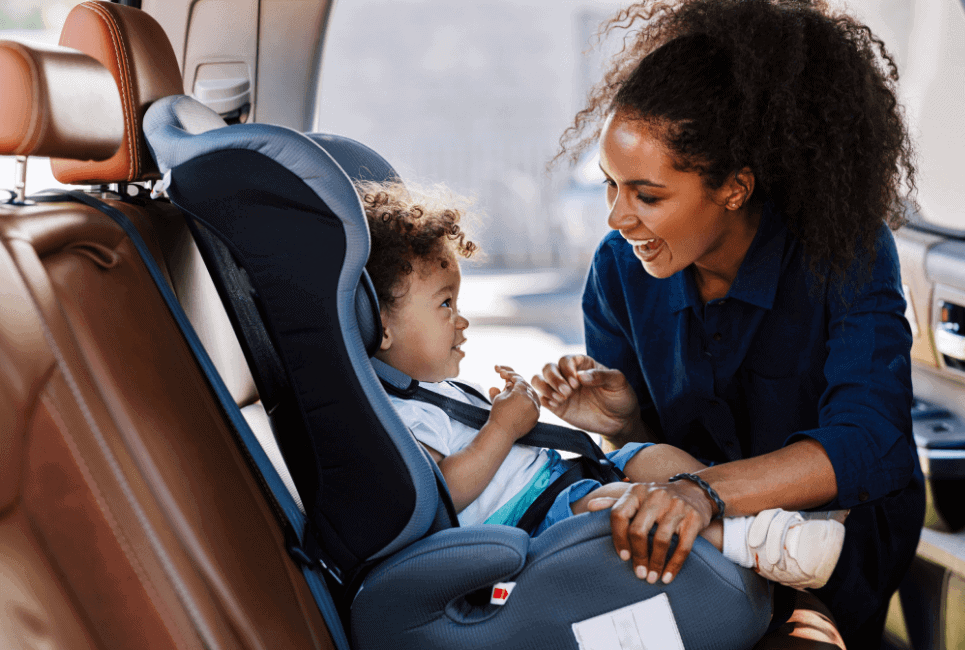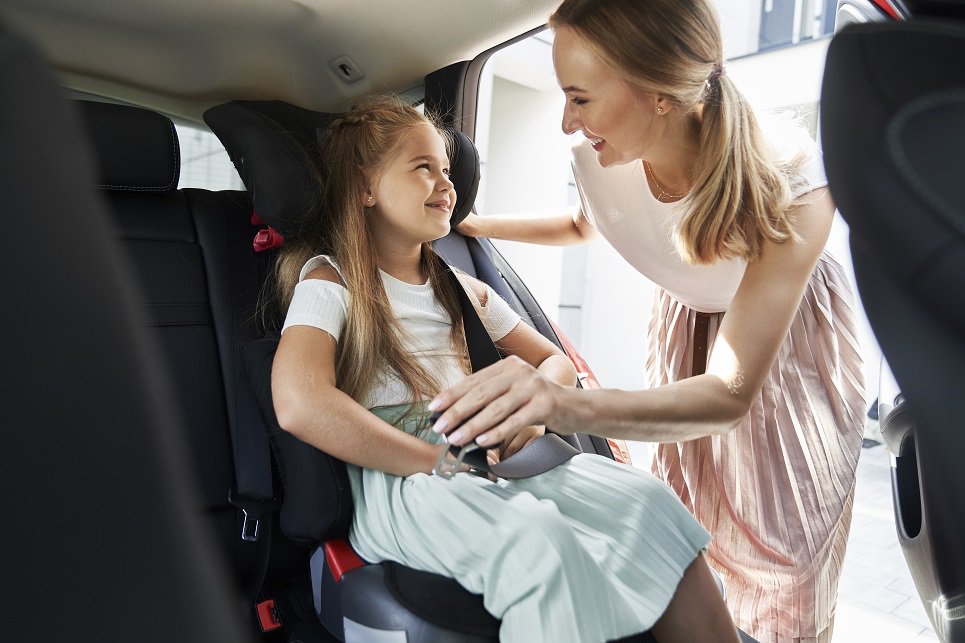- Nuna Rava vs Maxi Cosi Pria 85 – Which Convertible Car Seat Is Best? - January 31, 2023
- Nuna Rava vs Graco 4Ever – Which One is Better? - December 7, 2022
- Chicco KeyFit 35 vs Chicco KeyFit 30 - September 30, 2022
A confusing part of parenting is having to keep up with the dynamic laws and recommendations concerned with car safety for their kids. After Nebraska reviewed its car seat laws in 2018, some folks may be confused about what these laws are.
This article is aimed at explaining Nebraska’s car seat laws clearly and concisely. As well as giving you insight into the dangers of failing to properly restrain your child during car rides. And suggesting how to pick the best car seats for your child according to their weight, height, and age.
A 2018 study showed that 73% of children less than 13 died in accidental deaths in car crashes. These children were traveling as passengers in the car they died in.

Properly restraining your child by using an appropriate car seat can reduce their injuries by 75% in children aged 0-3 years old. And up to 50% for children aged 4-8 years old. Fortunately, Nebraskans are keeping their children well strapped as a 2016 study showed that 98% of children aged 6 and below were properly strapped for car rides.
Table of Contents
Nebraska Car seat Laws Explained in Detail
Nebraska’s car seat laws were first introduced in January 1993. They applied to all not-for-hire cars produced after 1963. Since that time, notable changes have been made to the state’s car seat laws. The laws were reviewed in April 2018 and became effective in January 2019.
Here are the basic car seat laws in Nebraska:
- All children below the age of eight must be in a properly restrained car seat other than a front seat.
- Children below two years of age must remain rear-facing until they reach the height and weight limit for their car seat.
- Passengers between 8 and 17 years of age must ride in the back seat with their seat belt strapped or using an appropriate booster seat if the back is not already occupied by children less than 8.
- Children above 18 are prohibited from riding in cargo areas.
- Adults must ride with their seat belts on.
Nebraska’s Laws on Using Rear-Facing Car Seats
Studies like the one carried out by the Baby Products Association (BPA) in 2009 showed that rear-facing seats offer 75% more protection to you and your child in case of an accident. And a more recent study showed that rear-facing seats are five times safer than front-facing seats.
All infants and toddlers are advised to ride in rear-facing seats until they reach the maximum height and weight limit stated by the car seat manufacturer. At the barest minimum, toddlers should use these types of car seats for 2 years or more.
The law does not advise keeping rear-facing infants in the front seat. In a situation where doing so is unavoidable, be sure to push the seat back as much as possible.
Here’s a list of some of the best infant car seats to help you choose the perfect seat for your bundle of joy.
Using Front-Facing Car Seats Following Nebraskan Law
To determine whether your child is big enough to sit in a front-facing car seat, use the weight and height limit stated on your current rear-facing seat. This is advised by the American Association of Pediatrics (AAP) The height and weight limit for a rear-facing seat is usually 36 inches and 30-35 pounds.

A quality front-facing car seat we’d recommend is going through our gender-neutral car seats.
Using Booster Seats in Nebraska
These are recommended for school-aged children. They have exceeded the weight and height limit for front-facing seats but are still below the requirements for using a seat belt. By the time a child is about 4 feet and 9 inches and aged 8-12, they will be big enough to properly use the car’s seat belt.
A popular booster seat known for its popularity and quality is Clek Oobr. It is best suited for families who don’t want to deal with the hassle of taking your car seat in and out. Another popular variation of booster seats is the backless ones. The law isn’t specific on the use of these types of car seats. So you can go through our list of the best backless booster seats for your child.
Convertible Car Seats: Rear-Facing that can Become Front-Facing
These seats are considered investments because they are used from birth to when your child outgrows a car seat. Depending on the weight of your baby they can be used as rear-facing and front-facing. In Nebraska, you can switch your baby from rear-facing to front-facing at minimum age 2. With a convertible you don’t have to buy a new seat, just flip your car seat from rear-facing to front-facing.
The only downfalls to these seats are how their size affects mobility. They cannot be moved from one car to another easily. And they cannot be used as carriers. They are also more difficult to use for smaller infants.
A reliable convertible seat we’d recommend is the Clek Foonf convertible car seat.
Penalties for Car Seat Violations in Nebraska
All Nebraska’s car laws apply to not-for-hire cars made after 1963.
Seatbelt or child restraint violations result in a fine of $25. Violations related to children under 8 years old will result in the driver’s license being assessed and subjected to one license demerit point.
Exceptions to Nebraska’s Car Seat Laws
Every vehicle with a seat belt is expected to follow the new car seat law. However, there are 3 exceptions: Taxicabs, mopeds, motorcycles, and any other vehicle designed before 1963 without seat belts are exempted from Nebraska’s car seat laws.
Children waived by licensed physicians as having a condition where using a seat belt would cause them harm. The law states the driver must carry a signed note from the physician stating why the child cannot use a seat belt or child restraint. And must identify the child at all times.
Finally, authorized emergency and parade vehicles are also exempted from the car seat law.
Safe Kids Nebraska
Safe Kids Nebraska is an initiative aimed at reducing the rate of accidental injury among children. Accidental injury is the leading cause of death in children less than 14. Safe Kids Nebraska is aimed at preventing these injuries through grassroots programs across the state.

Their activities range from car-seat checkups, water safety programs, home safety programs, and more. These local partners are actively working towards a safer community for their children. Safe Kids Nebraska is affiliated with Safe Kids Worldwide, a global organization dedicated to preventing injuries to children since 1988. You can contact the initiative at their office-, through their phone-, or via email.
More Resources to Contact Regarding Car Safety in Nebraska
Aside from the Safe Kids Nebraska network, there are a handful of other resources that can be consulted regarding your child’s safety during car rides. We listed a few of them below:
- NHTSA car seat inspection Center
- A List of Stations by the Government of Nebraska
- Children’s Hospital and Medical Center Car Seat Fittings
- Scottsbluff Car Seat Program
- Boone County Health Center Car Seat Safety
Affordability of Car Seats
We admit that some car seats are expensive, with prices going over $150. But that doesn’t mean you have to break the bank to get a decent car seat for your child. Brands like Cosco offer very affordable car seats. For example, their topside booster seat is a lightweight and affordable option, making it easy for you to give your kids the protection they need without spending a fortune.
FAQs
Answer: In all honesty, there aren’t any laws that prevent you from reusing an old car seat. After all your child will eventually outgrow it, and rather than give it out you may keep it for your next child.
To answer the question of whether this can be done safely, you have to confirm two things:
The expiration date of the car seat and the crash history of the car seat.
Many might not know that car seats come with expiration dates. Confirming that your car seat is not expired before using it for your next child is the first step to guaranteeing their safety. Using a seat within its expiration date reflects that its technology is not outdated.
Seats that have been involved in moderate to severe car crashes should be replaced. They may look fine on the surface but certain components could be cracked, broken, or deformed from the crash. And this will have an effect on its ability to protect your child.
Answer: The expiration date is located on the car seat. Depending on what model you use, you will find it in various locations.
Most models have the expiration date printed on the seat’s plastic shell- either behind the seat or under it. Newer models also mention the expiration date in the instruction model.
Answer: In this article, we covered three types of car seats for your children; rear-facing, front-facing, and booster. Rear-facing seats are designed for infants and toddlers. And you should leave them there until they reach the maximum weight and height limit stated by the manufacturer. Some people leave them there until they are 2-4 years old.
Front-facing seats are designed for toddlers and preschoolers. And these children are left there until they are about 36 inches in height and 30-35 pounds in weight.
Booster seats are for children who have outgrown their front-facing seats. Nebraskan law states that all children below age 8 who have outgrown front-facing seats must use the restraint a booster seat offers during car rides.
Answer: No, it is not. Car seats are designed for adults, and they have successfully saved the lives of thousands of adults because:
• They were being worn properly
• They were being worn by adults who met the height and weight requirements
• Children wearing regular seat belts in a car are at risk of severe injury or even death in case of an accident. This is because they are not properly restrained by the seat belt.
Rather than protect your children, an ill-placed seat belt may cause them injuries in their abdomen, chest, or even spine.
Answer: The law permits children to ride in the front seat at age 8. Nebraskan law states that children who are less than 8 must travel in the backseat. For children who are up to 18 years of age, the most travel in some form of restraint. This would be your regular car seat as their bodies would’ve reached the appropriate requirements to use it properly.
Answer: In Nebraska, leaving a child under 6 years old in a running car unattended is illegal. The state considers it child neglect and abuse for any child under 6 to be in that situation.
Violation of this law can lead up to 3 months of jail time and a fine of $500.
Answer: There are no Nebraskan laws that directly tackle the topic of smoking with infants/young children in the car. However, it is not something we would advise. Doing so may cause respiratory complications for your children.
According to the National Health and Medical Research Council, children who inhale second-hand smoke in a car can possibly suffer from increased risk of asthma, bronchitis, excessive coughing, and wheezing. Electronic cigarettes are no different. They equally impose the same threats to children in the car.
Final Thoughts
Your child’s safety should be your number one priority. Special thought should go into picking a seat that’s compatible with your child’s height and weight, as well as your car. Doing this will ensure that your child is properly restrained and protected from any injuries that could occur in a crash.



